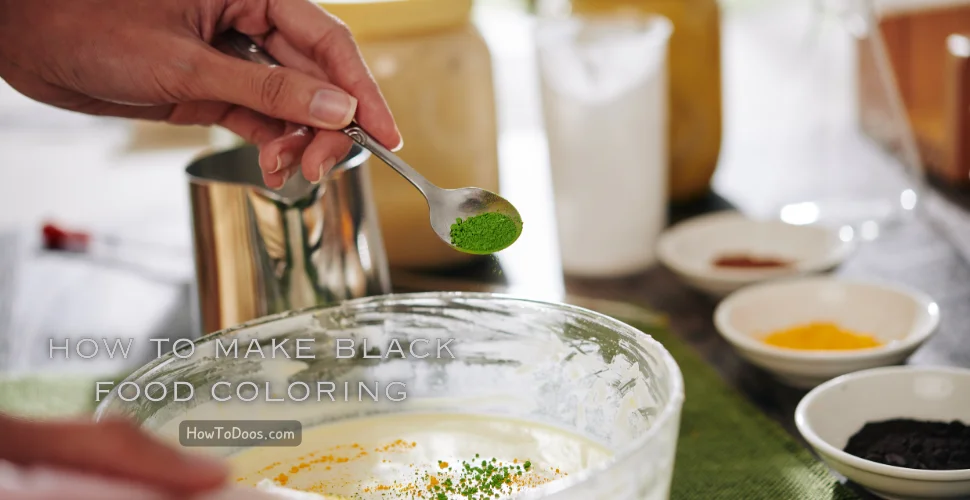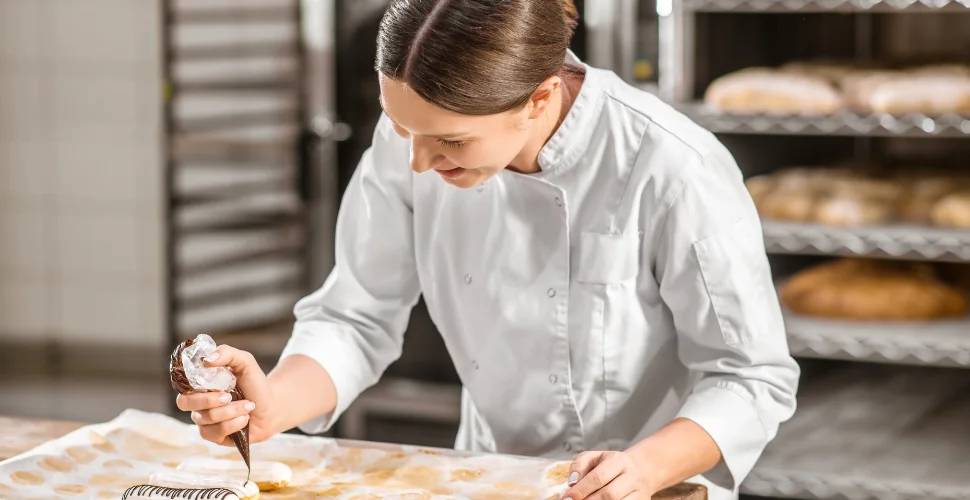How to Make Black Food Coloring at Home: A Complete Guide
-
 Olivia Taylor
Olivia Taylor - 28 Oct, 2024

Black food coloring is essential for creating striking desserts, from cakes and cookies to frostings and macarons. While store-bought black food coloring is convenient, making your own at home is simple and allows you to control the ingredients, perfect for those looking for natural or allergen-free options.
In this guide, we’ll cover two main ways to make black food coloring: using standard food color combinations and natural ingredients. Follow these steps to achieve a bold, rich black color for any culinary creation.

Method 1: Making Black Food Coloring Using Primary Colors
To create black food coloring, you can blend primary colors (red, blue, and green or yellow). Here’s how:
Ingredients
- Red food coloring
- Blue food coloring
- Green food coloring
Instructions
- Combine Colors: Start by mixing equal parts red, blue, and green food coloring in a small bowl.
- Adjust for Darkness: Add more blue and red food coloring as needed to deepen the black hue.
- Test the Color: Apply a small amount to a bit of frosting or batter to check the intensity. Adjust if needed.
- Store Properly: If you make extra, store the black food coloring in an airtight container for up to two weeks.
Tip: Using gel-based food coloring will give a more vibrant and concentrated color compared to liquid food coloring.
Method 2: Making Natural Black Food Coloring
For a more natural approach, activated charcoal or cocoa powder can create black food coloring without synthetic dyes.
Ingredients
- Activated charcoal powder (food-grade)
- Water (for thinning, if needed)
Instructions
- Mix the Ingredients: Start by adding a small amount of activated charcoal powder (about 1/8 teaspoon) to a tablespoon of water.
- Combine Thoroughly: Stir until the charcoal is completely dissolved. Add more powder if a darker shade is needed.
- Test the Mixture: Apply a small sample to check for the desired color intensity. Adjust if necessary.
- Add to Recipe: Use as you would any other food coloring, adding gradually to frosting, batter, or dough until the desired black color is achieved.
Note: Activated charcoal can slightly alter the taste. Use sparingly, especially in lighter-flavored recipes.
Tips for Using Black Food Coloring
- Start Small: Black food coloring is strong, so start with small amounts to avoid overly intense color.
- Use Gel Colors for Frosting: Gel colors work best in frostings and fondants, as they offer a thicker consistency and deeper color without adding too much liquid.
- Refrigerate for Enhanced Color: For best results, let black-colored frosting sit in the fridge for a few hours to deepen the color.
Frequently Asked Questions
Q: Can I make black food coloring with natural ingredients only?
A: Yes, activated charcoal and cocoa powder are popular natural options. Both offer a dark hue, though cocoa powder may give a softer black than synthetic dyes.
Q: Is it safe to use activated charcoal in food?
A: Food-grade activated charcoal is safe in small amounts. However, those with certain medical conditions should consult a healthcare professional before consuming activated charcoal.
Q: How can I make black food coloring darker?
A: Add more blue and red to synthetic mixtures, or more activated charcoal in natural versions. Letting the color sit for a few hours can also enhance the intensity.

Conclusion
Making black food coloring at home is a simple process with flexible options for both synthetic and natural ingredients. Whether you’re decorating Halloween treats or crafting elegant cakes, homemade black food coloring provides rich, consistent color with control over ingredients. Experiment with these methods to find the perfect black shade for your recipes!
